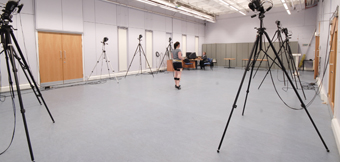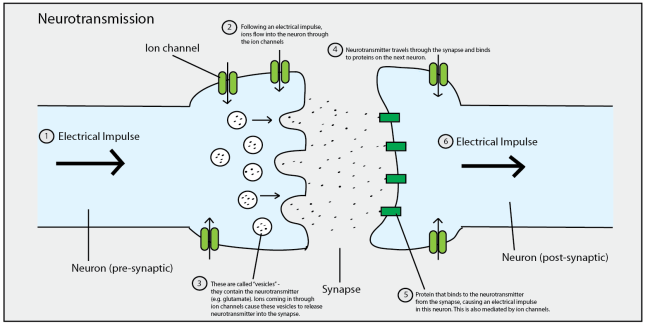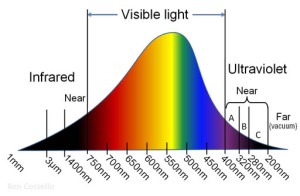Happy Sunday, everyone!
It’s been a while, I know, but I’ve been quite busy of late writing for other sites. First off, I’ve written another article for the University of Liverpool’s Becoming an Expert series, this time about my friend Andrew Swale’s work on Clostridium difficile. I’ve also written a guest post for Manchester University’s fantastic student-run blog, the Brain Bank, all about Komodo Dragons and the mechanism they use to kill prey.
But enough of the self-publicity! Let’s get onto the matter at hand. A while ago I gave a somewhat over-ambitious 5 minute presentation at a local café/bar about how the public perception of science has changed over time (you can check out a video of my talk here – I come on at 46.03). Given the positive reaction it received I felt like it was worth adapting into a blog post. However, as the talk covered a few important topics to which I only had time to pay lip service, I thought I’d focus on the first third of the talk only in this post. That’s a big enough challenge in itself!
So, here we’ll take a quick look at the changing relationship between Science and Religion over the ages. Obviously this in itself is still a massive topic so what I talk about here can only scratch the surface of this complex relationship. But I hope it will shed some light on three key periods in time and, perhaps, encourage you to read into these eras in more detail than I’m able to provide here. So, without further ado, let’s get cracking. Enjoy!
Changing Times
The way in which Science and Religion have impacted upon one another has changed hugely over the centuries. Every civilisation and religion comes with its own views, rules and consequences, affecting that relationship. Of course, somewhat inevitably, many of these cultures and religions have affected one another in turn as a result of wars, conquests and mergers.
One extraordinary example of this was the expansion of the Greek Empire under the rule of Alexander the Great. In the phenomenal decade-long campaign he led up until his death, Alexander laid claim to the entire Persian Empire, spreading his laws and religious beliefs as he went. Alexander seemed to genuinely believe he was the son of Zeus, and word of his divinity spread with his Empire. When he claimed Egypt, he was declared the son of the Egyptian God Amun, after which Alexander often referred to himself as the son of Zeus-Ammon, demonstrating how the two religions were affected by one another and merged together during his brief reign.
Ancient Egypt and Greece are actually two of the three eras I touched upon in my talk, as I believe they exemplify the dynamic relationship between Science and Religion.
The Ancient Egyptians (~3150 BC to ~30 BC)
The Egyptians didn’t have what we would call ‘scientific understanding’. Rather than working out the earthly and natural meanings for the phenomena they observed, they attributed everything to their Gods. Yet, despite not knowing the scientific cause for things, they learned an incredible amount about the world in their bid to understand their Gods’ wishes and to use natural phenomena in the pursuit of worship.
One notable example of this is the way in which the great Egyptian minds made use of the stars. Through years of study, they mapped the paths of certain celestial bodies across the sky with such accuracy that they were able to predict their movements throughout the year. This may not seem like much now but a lot of our knowledge of the night skies has stemmed from Egyptian observations so their importance cannot be overstated.
A fantastic application of their knowledge can be seen in Karnak Temple in Luxor. The temple was built in order to worship the Sun God, Amun Re. The Egyptian astronomers, or ‘cosmologists’, realised that the sun rises at a different point along the horizon, depending on the time of year. So, when building the temple, the architects positioned the building in such a way that, on the Winter Solstice, the sun rose directly between the 2 pillars at the front, filling the main area of the temple with light. By all accounts it is a phenomenal sight and one that I’d love to see first-hand some day.
However, whilst the Egyptian architects and thinkers were considered great minds, they were always considered second to the Gods they sought to worship. Religion very much dominated the culture, leaving little room, or perceived need, for Science. As a result of the culture’s faith they never really learned the scientific reasoning behind the wonders they observed.
The Ancient Greeks (~800 BC to ~150 BC)
Arguably, it wasn’t until the Ancient Greeks developed the first recognisable scientific methodology that things began to change. Amongst the Greeks were some of the greatest minds ever known – Thales, Pythagoras, Archimedes, Aristotle (who actually tutored Alexander the Great!)… the list goes on and on! Many of these men began to study the reasons behind phenomena they saw, not content to just accept them as the will of the Gods.
As a result of their desire and ability to understand the world around them, these philosophers and scientists gained a reputation for being geniuses, even in their own time. Awareness of scientific thinking and its importance in society was on the rise.
Now, the Ancient Greeks’ religion overlapped somewhat with that of the Ancient Egyptians. Their often-similar Gods were also thought to influence most aspects of life. As such, there were some things that people just weren’t ready for science to explain. For example, Hippocrates – author of the Hippocratic Oath upon which western medicine is founded – realised that disease wasn’t a divine punishment. It was, in fact, borne of earthly causes.
Obviously, such revelations didn’t always go down well. Hippocrates, whilst advancing his society’s understanding of the world, had just diminished the role of the Gods in that world. It is not surprising, therefore, that many fought against such notions. Eventually, however, these ideas took hold and arguably improved Science’s standing in society as it afforded a greater understanding of the world. Religion remained an integral part of society, but Science had now proved its fascinating worth. The ball had started rolling and Science’s role in society would increase throughout the centuries.
The 19th Century
At this point, let’s skip forward a few centuries (I told you we’d only be able to scratch the surface here)! Specifically, let’s skip forward to 24th November 1859. This was one of the most important dates in the history of Science and a key turning point in the relationship between Science and Religion. It was the day that Charles Darwin’s seminal work ‘On the Origin of Species’ was first published.
At this time, despite the fact that Gods were no longer considered responsible for absolutely everything, certainly in Western cultures, contradicting religious teachings was still massively controversial. In Christianity, for example, it was an accepted fact that God created the Earth, the Moon and the Stars, as well as all of Life. Humans were created and placed upon this world in the form people currently saw. This was an inalienable truth.
During the first half of the 19th century, there had been rumblings amongst some scientists suggesting that this was not the case. However, scientific establishments had quite a close relationship with the Church of England, so these ideas never really went anywhere. Darwin, however, was so convinced of his own work’s importance that he had it published, courting massive controversy. The Church, naturally, rejected the theory, whilst many scientists also questioned or refuted it. There were, however, some who accepted the theory and, obviously, this number grew over time as his ideas were investigated.
The general public were, at this point, caught in the middle of a fascinating stage in the relationship between Science and Religion. Who did they believe? Did they trust the Church, which held such sway in their lives, or did they trust the ever-growing number of scientists, trusted and revered minds, who dared to disagree with the Church? Whereas Greek philosophers had, on a simplistic level, caused people only to question their religious views, the public was now forced to question both their religion and scientists.
Prompting Progress
It could be argued that the controversy caused by this revelatory work, and others like it, shaped Science’s progress for decades to come. Scientists were now forced to dig deeper and drive scientific understanding even further in an effort to answer the questions to which the public demanded answers. Scientists were, and would still be for many decades, considered incredible minds. However, people came to realised that blind acceptance wasn’t necessary. As a result, scientists learned more about the world we live in, advancing society in the process.
The product of all this is the world in which we live now, where Science is driving forward understanding at an ever-increasing pace. It is, however, also leaving its awkward bedfellow Religion behind in some respects. Certainly, Religion remains an ever-present aspect of many people’s lives and it will continue to do so for the foreseeable future. But, for many, Science has greater importance in their lives as it seeks to offer tangible evidence-based answers to the questions we have about the universe. The question now is how the relationship between Religion and Science will change in the future. It is a dynamic relationship, no doubt, with time and location playing massive roles in its development. Only time will tell how they will get along a century from now…























